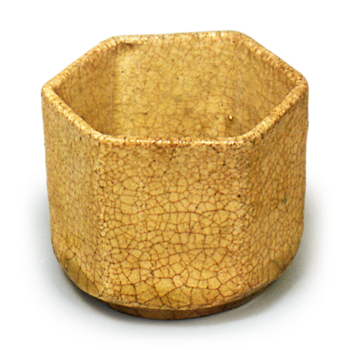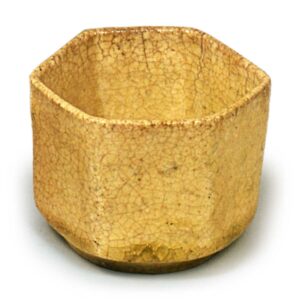
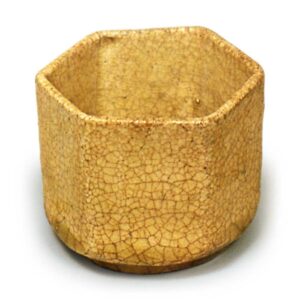
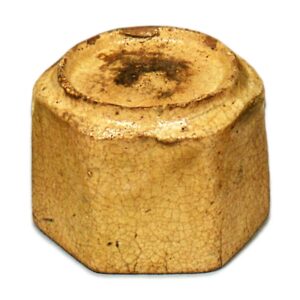
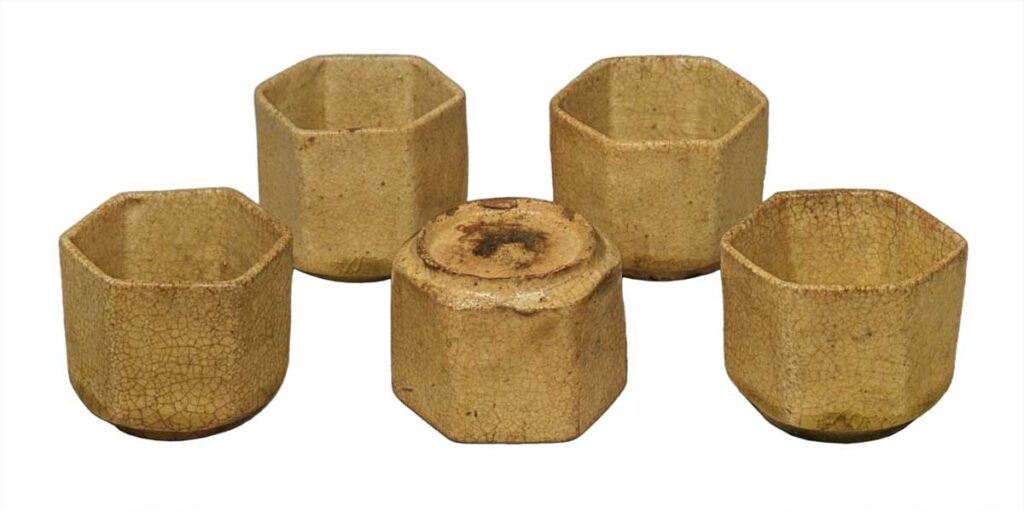
Height 5.9 cm, mouth diameter 6.2-6.4 cm, base diameter 5.1 cm
Tokyo National Museum
This type of Kizeto is commonly called gûnyûte. It may have originated as a boar’s mouth, but today it is used as a gulping cup. This type of pottery rarely has a fried skin, and the glaze is relatively well melted and glossy. Some of them show a faint burnt surface inside the base, and they serve a role as a sake cup or a stone cup for kaiseki (stoneware used for tea ceremony). It is likely that these cups were made on the potter’s wheel and then molded into a hexagonal shape, and there are many examples of similar shapes handed down from generation to generation.

